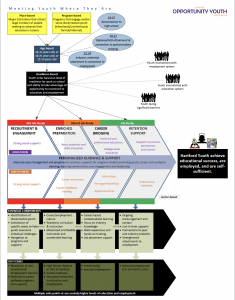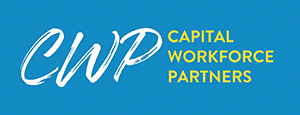The phases of the pathway system are:
- Engagement: This phase focuses on outreaching to youth and engaging them in programs and services to encircle them with supportive services. Goals are addressing non-education and non-employment barriers such as basic needs (housing, health, food security) and others (child care, transportation, etc.).
- Preparation: This phase provides basic education and skill development as well as career awareness and readiness. Goals are high school diploma or equivalent (if needed), development of an individual career plan, measurable skill gains including literacy and/or numeracy gains of one or more educational functioning level (EFL), and demonstrated proficiency of career readiness skills.
- Bridging: This phase provides postsecondary technical, professional, and/or college-level education plus work experience. Goals are attainment of stackable credentials recognized by U.S. Department of Labor and Connecticut Department of Labor, enrollment in an accredited post-secondary education institution, and employment in a job related to training that leads to careers with sustaining wages.
- Retention: This phase provides supports to ensure education and employment persistence and success. Examples include just-in-time supports and peer and professional networks. Goals are continued enrollment in postsecondary education (if applicable) and retained employment.
Click here for a handout about the system and its elements.

